 W
WAcemhöyük is an archaeological site in Turkey. The tell is located near the village of Yeşilova in Merkez district, Aksaray Province. The Bronze Age name for the place was probably Purušḫanda/Purušḫattum or Ullama. The site was an Assyrian trading colony, or Karum.
 W
WArrapha or Arrapkha was an ancient city in what today is northeastern Iraq, on the site of the modern city of Kirkuk.
 W
WAššur (; Sumerian: 𒀭𒊹𒆠 AN.ŠAR2KI, Assyrian cuneiform: Aš-šurKI, "City of God Aššur"; Syriac: ܐܫܘܪ Āšūr; Old Persian 𐎠𐎰𐎢𐎼 Aθur, Persian: آشور: Āšūr; Hebrew: אַשּׁוּר: Aššûr, Arabic: اشور), also known as Ashur and Qal'at Sherqat, was the capital of the Old Assyrian Empire (2025–1750 BC), the Middle Assyrian Empire (1365–1050 BC), and for a time, of the Neo-Assyrian Empire (911–608 BC). The remains of the city lie on the western bank of the Tigris River, north of the confluence with its tributary, the Little Zab, in what is now Iraq, more precisely in the al-Shirqat District of the Saladin Governorate.
 W
WBalawat is an archaeological site of the ancient Assyrian city of Imgur-Enlil, and modern village in Nineveh Province (Iraq). It lies 25 kilometres (16 mi) southeast from the city of Mosul and 4 kilometres (2.5 mi) to the south of the modern Assyrian town of Bakhdida.
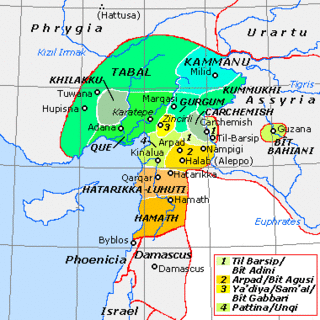 W
WCarchemish, also spelled Karkemish was an important ancient capital in the northern part of the region of Syria. At times during its history the city was independent, but it was also part of the Mitanni, Hittite and Neo-Assyrian Empires. Today it is on the frontier between Turkey and Syria.
 W
WDiyarbakır is one of the largest cities in Turkey. Situated on the banks of the Tigris River, it is the administrative capital of the Diyarbakır Province of southeastern Turkey. It is the third-largest city in Turkey's Southeastern Anatolia Region, after Şanlıurfa and Gaziantep.
 W
WDuhok, also spelled Dihok is the capital of the Duhok Governorate in Iraq's Kurdistan Region. The city is encircled by mountains along the Tigris river. Duhok has a growing tourist industry. Its population has increased rapidly since the 1990s, as the rural population moved to the cities after villages were destroyed by the Iraqi Army during the 1991 uprisings in Iraq. The University of Duhok, founded in 1992, is a renowned center for teaching and research. The city of Duhok is populated by Kurds and Assyrians.
 W
WDur-Sharrukin, present day Khorsabad, was the Assyrian capital in the time of Sargon II of Assyria. Khorsabad is a village in northern Iraq, 15 km northeast of Mosul. The great city was entirely built in the decade preceding 706 BC. After the unexpected death of Sargon in battle, the capital was shifted 20 km south to Nineveh.
 W
WErbil or Hawler, known in ancient history as Arbela and also spelled Arbil, Arbel and Irbil, is the capital and most populated city in Kurdistan Region in Iraq. It has about 1,5 Million inhabitants, and Erbil Governorate has a permanent population of 2,069,420 as of 2015.
 W
WGird-î Qalrakh is a tell, or archaeological settlement mound, in the Shahrizor Plain in Iraqi Kurdistan, Iraq. The archaeological site covers an area of 3 hectares according to the excavators; a geomagnetic survey indicated a size of 15 ha. At 26m high, Gird-î Qalrakh has been described as one of the highest mounds in the Shahrizor Plain. Excavations have been carried out in 2016, 2017 and 2019 by a team from the Goethe University Frankfurt. This research showed that the site has been almost continuously occupied from the third millennium BC into the Islamic period. Important discoveries include a substantial stone-built wall from the Neo-Assyrian period, and a well-preserved loom from the Sassanian period. Together with the numerous seals that have been discovered, this suggests that textile production may have been important at Gird-î Qalrakh during this period.
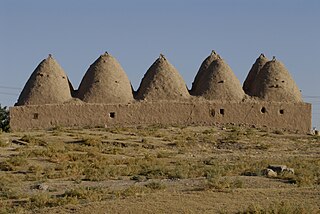 W
WHarran, ancient Carrhae, was a major ancient city in Upper Mesopotamia whose site is in the modern city Harran, Turkey, 44 kilometers southeast of Şanlıurfa. The location is in the Harran district of Şanlıurfa Province.
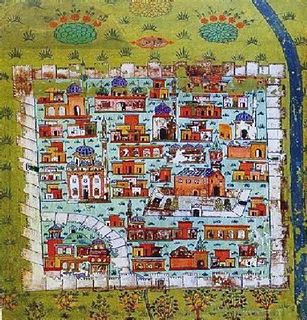 W
WThe history of Diyarbakır, one of the largest cities in Kurdistan and a metropolitan municipality of Turkey, spans millenia. Diyarbakır is situated on the banks of the Tigris River. The city was first mentioned by Assyrian texts as the capital of a Semitic kingdom. It was ruled by a succession of nearly every polity that controlled Upper Mesopotamia, including the Mitanni, Arameans, Assyrians, Urartu, Armenians, Achaemenid Persians, Medes, Seleucids, and Parthians. The Roman Republic gained control of the city in 66 BC, by which stage it was named "Amida". Amida was part of the Byzantine Empire until the Muslim conquest, after which a variety of Muslim polities gave way to the Ottoman Empire. It has been part of the Republic of Turkey since the dissolution of the Ottoman Empire.
 W
WKar-Tukulti-Ninurta was a new cult center for Ashur and perhaps a new capital city founded by the Assyrian king Tukulti-Ninurta I just north of Assur. Its name meant "Port Tukulti-Ninurta".
 W
WKirkuk is a city in Iraq, serving as the capital of the Kirkuk Governorate, located 238 kilometres north of Baghdad. Kirkuk lies in a wide zone with an enormously diverse population and has been multilingual for centuries. There were dramatic demographic changes during Kirkuk's urbanization in the twentieth century, which saw the development of distinct ethnic communities. Iraqi Turkmen, Kurds, Arabs, and Assyrian people lay conflicting claims to this zone, and all have their historical accounts and memories to buttress their claims.
 W
WKomopolis was a settlement in Assyria, which is mentioned by Ptolemy, 2nd century geographer, at his work Geography.
 W
WKültepe, also known as Kanesh, is an archaeological site in Kayseri Province, Turkey. The nearest modern city to Kültepe is Kayseri, about 20 km southwest. It consists of a tell, the actual Kültepe, and a lower town, where an Assyrian settlement was found. Its name in Assyrian texts from the 20th century BC was Kaneš; the later Hittites mostly called it Neša, occasionally Aniša. In 2014 the archaeological site was inscribed in the Tentative list of World Heritage Sites in Turkey. It is also the site of discovery of the earliest traces of the Hittite language, the earliest attestation of any Indo-European language, dated to the 20th century BC.
 W
WTell Leilan is an archaeological site situated near the Wadi Jarrah in the Khabur River basin in Al-Hasakah Governorate, northeastern Syria, a region formerly a part of ancient Assyria. The site has been occupied since the 5th millennium BC. During the late third millennium, the site was known as Shekhna. During that time it was under control of the Akkadian Empire. Around 1800 BC, the site was renamed "Shubat-Enlil" by the Assyrian king, Shamshi-Adad I and it became the capital of Assyria in northern Mesopotamia. Shubat-Enlil was abandoned around 1700 BC.
 W
WMardaman was a northern Mesopotamian city that existed between ca.2200 and 1200 BC. It was uncovered in 2018 after translation of 92 cuneiform tablets. The tablets were discovered in summer 2017, near the Kurdish village of Bassetki, by a team of archaeologists. The team hailed from Tübingen's Institute for Ancient Near Eastern Studies, and were led by Prof. Dr. Peter Pfälzner of the University of Tübingen.
 W
WMardin is a city in southeastern Turkey. The capital of Mardin Province in Turkish Kurdistan, it is known for the Artuqid architecture of its old city, and for its strategic location on a rocky hill near the Tigris River that rises steeply over the flat plains. The city has large populations of Kurds, Arabs, and Assyrians. A 2013 study showed that Kurds are the majority in Mardin Province, while they make up 49% of the population of the capital cities of Mardin and Midyat. The same study showed that 49% of Mardin's population identify as Arabs.
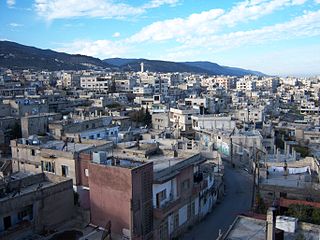 W
WMasyaf is a city in northwestern Syria. It is the center of the Masyaf District in the Hama Governorate. As of 2004, Masyaf had a religiously diverse population of 22,000 Ismailis, Alawites and Christians. The city is well known for its large medieval castle, particularly its role as the headquarters of the Nizari Ismailis and their elite Assassins unit.
 W
WNimrud is an ancient Assyrian city located 30 kilometres (20 mi) south of the city of Mosul, and 5 kilometres (3 mi) south of the village of Selamiyah, in the Nineveh plains in Upper Mesopotamia. It was a major Assyrian city between approximately 1350 BC and 610 BC. The city is located in a strategic position 10 kilometres (6 mi) north of the point that the river Tigris meets its tributary the Great Zab. The city covered an area of 360 hectares. The ruins of the city were found within one kilometre (1,100 yd) of the modern-day Assyrian village of Noomanea in Nineveh Governorate, Iraq.
 W
WNineveh was an ancient Assyrian city of Upper Mesopotamia, located on the outskirts of Mosul in modern-day northern Iraq. It is located on the eastern bank of the Tigris River and was the capital and largest city of the Neo-Assyrian Empire, as well as the largest city in the world for several decades. Today, it is a common name for the half of Mosul that lies on the eastern bank of the Tigris, and the country's Nineveh Governorate takes its name from it.
 W
WSam'al, also Zincirli Höyük, is an archaeological site located in the Anti-Taurus Mountains of modern Turkey's Gaziantep Province. It was founded at least as far back as the Early Bronze Age but was largely abandoned during the Hittite and Mitanni periods. It flourished again in the Iron Age, initially under Luwian-speaking Neo-Hittites, and by 920 BCE had become a kingdom. In the 9th and 8th century BC it came under control of the Neo-Assyrian Empire and by the 7th century BC had become a directly ruled Assyrian province.
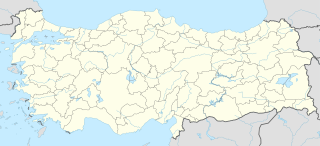 W
WŠinahuttum, later known as Sanahuitta, was a Bronze Age Assyrian city believed to have been northeast of Hattusa, the capital of the Hittite Empire in the late Bronze Age, near modern Boğazkale in Turkey. The city is mentioned in Assyrian sources 14 times and was noted for its donkey market and wool exchange.
 W
WThe ancient temple-complex, perhaps of Huzirina, now represented by the tell of Sultantepe, is a Late Assyrian archeological site at the edge of the Neo-Assyrian empire, now in Şanlıurfa Province, Turkey. Sultantepe is about 15 kilometres (9.3 mi) south of Urfa on the road to Harran. The modern village of Sultantepe Köyü lies at the base of the tell.
 W
WTell Barri is a tell, or archaeological settlement mound, in north-eastern Syria in the Al-Hasakah Governorate. Its ancient name was Kahat as proven by a threshold found on the south-western slope of the mound. Tell Barri is situated along the Wadi Jaghjagh, a tributary of the Khabur River.
 W
WTil Barsip or Til Barsib is an ancient site situated in Aleppo Governorate, Syria by the Euphrates river about 20 kilometers south of ancient Carchemish.
 W
WTunip was a city-state in western Syria in 1350–1335 BC, the period of the Amarna letters. The name "Syria" did not yet exist, though this was already the time of ancient Assyria. The regions were: Amurru, Nuhašše, the Amqu, Nii, etc.
 W
WTushhan is a Kurdish village known as or by residents and It was an ancient city that Assyrian have ruled for some time in Mesopotamia. It was a provincial capital in the upper Tigris river valley, on the south bank and inhabited since the Mitanni period, and mainly during the Neo-Assyrian period during the Iron Age.